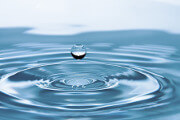Hurricanes are what scientists call "strong tropical cyclones." They're a large, rotating system of clouds, wind and thunderstorm activity that wreaks havoc wherever it goes. Get the goods on one of the most damaging and deadliest natural disasters of the world.
What is a Hurricane?
A hurricane, tropical cyclone, or typhoon is a severe tropical storm that forms in the Atlantic Ocean, Caribbean Sea, Gulf of Mexico or Pacific Ocean. When large areas of the ocean become heated, the air pressure over that area drops, causing thunderstorms, incredible waves and violent winds that start at 74 mph. Hurricanes rotate in a counter-clockwise direction around an "eye." When they come onto land, the torrential rains, winds and waves can damage buildings, trees and cars. In the US, the official Atlantic hurricane season is from June 1 to November 30, and the Pacific hurricane season runs from May 15 to November 30. However, hurricanes can happen at any time of the year.
 This is what a Hurricane looks like from above
This is what a Hurricane looks like from above
Hurricane Classification
Based on their wind speeds and damage potential, hurricanes are ranked according to the Saffir-Simpson Hurricane Scale. It starts at one (lowest winds) and goes up to five (highest winds).
- Category One - 74-95 mph winds.
- Category Two - 96-110 mph winds.
- Category Three - 111-130 mph winds.
- Category Four - 131-155 mph winds.
- Category Five - Winds greater than 155 mph.
 Hurricane Classification Chart
Hurricane Classification Chart
The Naming Process
A tropical storm is given a name once its winds reach 40 mph. In keeping with the English practice of referring to inanimate objects (like cars and boats) as female, hurricanes were named after girls. The first storm of the year was assigned a name beginning with the letter "A," the second with a "B" and so on. However, guys' names were introduced in 1979 and now, the names are alternated. Some hurricanes names are Andrew, Fran and Hugo.
Hurricane Katrina
On August 24, 2005, a Category One hurricane formed in the Atlantic Ocean and hit Miami, FL, causing major flooding, loss of power to more than one million residents, and 11 deaths. This hurricane, named Katrina, later became a Category 5, with winds of 175 mph, and hit Lousiana, Mississippi, Alabama, Georgia, Tennessee, Kentucky and may even reach parts of Canada. Nearly 2,000 people died as cities were flooded, buildings were destroyed and hundreds of thousands of residents were forced to flee their homes. Hurricane Katrina was one of the four fiercest US storms ever seen.
Terms to Know
- Hurricane Watch - A hurricane is possible within 36 hours. You should stay tuned to the radio or television for more information.
- Hurricane Warning - A hurricane with winds of 74 mph is expected within 24 hours. You may have to prepare to evacuate your home.

































